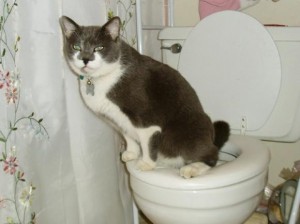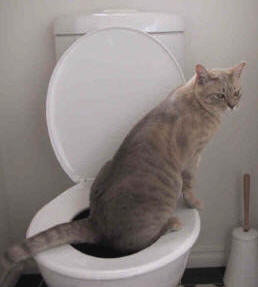Why You Should Never Get rid of Animal Waste Down the Toilet
Why You Should Never Get rid of Animal Waste Down the Toilet
Blog Article
Are you trying to find suggestions around Should you flush animal waste down the toilet?

When it pertains to disposing of waste, especially animal waste, lots of people frequently turn to the convenient option of flushing it down the toilet. Nonetheless, this relatively very easy solution can have serious consequences for the atmosphere and public health. In this short article, we'll explore why flushing animal waste down the commode is a bad idea and provide alternate approaches for appropriate disposal.
Introduction
Correct garbage disposal is essential for preserving ecological sustainability and public health. While it might appear harmless to flush animal waste down the toilet, it can lead to different issues, both for the environment and human wellness.
Dangers of flushing animal waste
Ecological influence
Flushing animal waste introduces unsafe germs and pathogens right into waterways, which can negatively affect water ecological communities. These pathogens can contaminate water sources and damage marine life, interfering with fragile ecological communities.
Public health issues
Animal waste contains unsafe bacteria such as E. coli and Salmonella, which can position significant health and wellness risks to human beings. Flushing pet waste down the toilet can contaminate water products, leading to the spread of illness and infections.
Alternatives to flushing
Rather than purging animal waste down the commode, there are a number of alternate disposal techniques that are extra environmentally friendly and sanitary.
Composting
Composting pet waste is an environment-friendly way to dispose of it. By composting, organic matter is broken down right into nutrient-rich dirt, which can be utilized to fertilize gardens and plants.
Garbage dump disposal
Getting rid of pet waste in a land fill is an additional option. While not as environmentally friendly as composting, it is a safer alternative to flushing, as it stops the contamination of water sources.
Pet waste disposal systems
There are specialized pet dog garbage disposal systems offered that securely and hygienically take care of animal waste. These systems often utilize enzymes to break down waste and eliminate smells.
Steps to proper animal waste disposal
To ensure correct disposal of pet waste, adhere to these actions:
Scooping and nabbing waste
On a regular basis scoop and bag pet waste utilizing eco-friendly bags. This prevents waste from infecting the atmosphere.
Utilizing marked waste bins
Dispose of bagged pet waste in marked waste containers, such as garden compost bins or landfill containers. Stay clear of flushing it down the commode in any way prices.
Cleansing litter boxes and family pet locations on a regular basis
Consistently clean litter boxes and pet dog areas to stop the accumulation of waste and germs. Use pet-safe cleaning items to keep hygiene.
Benefits of correct disposal techniques
Adopting correct disposal techniques for pet waste offers numerous benefits:
Decreased environmental pollution
Proper disposal techniques reduce the risk of environmental pollution, securing rivers and communities from contamination
Minimized threat of water contamination.
By preventing flushing animal waste down the toilet, the threat of water contamination is significantly lowered, securing public health.
Boosted cleanliness and health
Correct disposal approaches advertise far better sanitation and hygiene, producing a more secure setting for both people and animals.
Final thought
Finally, purging animal waste down the bathroom is dangerous to the setting and public health. By taking on alternate disposal approaches and adhering to appropriate waste management methods, we can lessen the unfavorable impact of pet waste and add to a cleaner, healthier earth.
What To Do With Dog more info Poo – The Do's And Don'ts Of Disposing Of Faeces
Dog poo bins
Some councils provide dedicated dog waste bins in popular dog-walking areas that can take dog poo that has been bagged but you can legally dispose of dog waste in any public litter bin, as long as it is securely bagged. This also applies to your wheelie bin at home.
Do not flush
Water companies do not recommend flushing dog faeces down the toilet because certain parasites can survive the water processing treatment and are potentially harmful to humans. You should also never consider flushing dog poo that has been bagged down the toilet as the bags will not break down and instead create severe blockages in the sewage system.
In the woods
The Forestry Commission promotes a ‘stick and flick’ method for dealing with waste in the woods. This means finding a stick and using it to flick any poo from off the path so that it is out of the way of other walkers. You could also bury it as long as it is not in an area where there might be livestock.
Livestock
Parasites found in dog poo can be transmitted to livestock if they inadvertently eat infected faeces that has been left on grazing land. This could result in the death of sheep or abortion in cattle so you should always make sure you pick up your dog’s waste in fields where livestock could be present.

Consistently clean litter boxes and pet dog areas to stop the accumulation of waste and germs. Use pet-safe cleaning items to keep hygiene.
Benefits of correct disposal techniques
Adopting correct disposal techniques for pet waste offers numerous benefits:
Decreased environmental pollution
Proper disposal techniques reduce the risk of environmental pollution, securing rivers and communities from contamination
Minimized threat of water contamination.
By preventing flushing animal waste down the toilet, the threat of water contamination is significantly lowered, securing public health.
Boosted cleanliness and health
Correct disposal approaches advertise far better sanitation and hygiene, producing a more secure setting for both people and animals.
Final thought
Finally, purging animal waste down the bathroom is dangerous to the setting and public health. By taking on alternate disposal approaches and adhering to appropriate waste management methods, we can lessen the unfavorable impact of pet waste and add to a cleaner, healthier earth.
What To Do With Dog more info Poo – The Do's And Don'ts Of Disposing Of Faeces
Dog poo bins
Some councils provide dedicated dog waste bins in popular dog-walking areas that can take dog poo that has been bagged but you can legally dispose of dog waste in any public litter bin, as long as it is securely bagged. This also applies to your wheelie bin at home.
Do not flush
Water companies do not recommend flushing dog faeces down the toilet because certain parasites can survive the water processing treatment and are potentially harmful to humans. You should also never consider flushing dog poo that has been bagged down the toilet as the bags will not break down and instead create severe blockages in the sewage system.
In the woods
The Forestry Commission promotes a ‘stick and flick’ method for dealing with waste in the woods. This means finding a stick and using it to flick any poo from off the path so that it is out of the way of other walkers. You could also bury it as long as it is not in an area where there might be livestock.
Livestock
Parasites found in dog poo can be transmitted to livestock if they inadvertently eat infected faeces that has been left on grazing land. This could result in the death of sheep or abortion in cattle so you should always make sure you pick up your dog’s waste in fields where livestock could be present.

We had been shown that write-up on Why you should never flush dog poop down the toilet from a pal on another web blog. Sharing is nice. Helping others is fun. Kudos for your time. Return soon.
Click Here Report this page